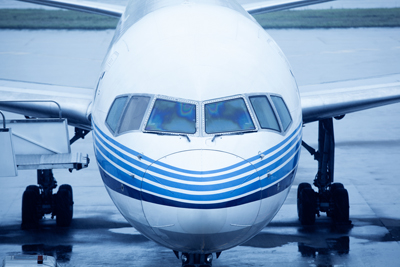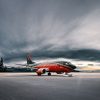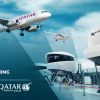
In the last few years the aviation industry in Russia has been steadily growing. According to IATA, in 2013 local airlines carried an impressive number of more than 80 million passengers, while in Q3 2014 alone air passenger traffic in the country increased by 12%. However, as even the major players have recently started to cancel their development plans due to lowering demand and profitability issues, the majority of carriers in Russia might want to consider re-inventing their HR-related strategies in order to gain more flexibility.
In late July 2014 Aeroflot announced changing its plans to introduce 22 Airbus А350XWBs in the upcoming 2 years. Instead, the carrier is to stretch the term of introduction over the period of 2018-2023. As its CEO has stated in a recent interview, this decision was made based on the most significant drop in demand the company had seen since 2009. According to CAPA, despite the fact that in June the company’s domestic traffic grew by 27.4% the carrier posted a net loss of $49 thousand in the first half of 2014, compared to a profit of almost $1.2 million during the same period a year earlier.
The national airline is not the only one facing growth-related challenges. For instance, recently, another major Russian airline – Transaero – has also ammended its plans regarding the introduction of four Boeing 787s. Multiple cost-related issues as concerns the new type introduction, operation and maintenance have been named among the most significant reasons for the decision.

“While it might be tempting to say that the recent changes in the Russian aviation industry have been a result of certain political disruptions, it may not necessarily be the case. For instance, already in March 2014 the traffic in Russia rose as few as 2.5%, compared to a 26% increase during the same period last year. Therefore, one should keep in mind the overall drop in traffic growth on many of the popular holiday destinations in Russia,” shares Skaiste Knyzaite, the CEO of AviationCV.com “Regardless of the case, however, this is an important sign to the global industry, that one should not be blinded by the apparent fluency of the post-crisis recovery.”
According to IATA, currently the average actual earnings of a carrier globally account for less than $6 per departing passenger. Therefore, in the opinion of the CEO of AviationCV.com, one could easily guess the pressure airlines experience in terms of the need to cut operating expenses. Meanwhile, the introduction of new aircraft to the fleet – let alone a new type – requires not only significant budget investments in the actual assets, but also investments in qualified personnel. For instance, in Russia it would cost almost $53 000 to re-train a single flight crew for a foreign aircraft, $15 700 – to maintain crew qualification and up to $6 500 – to educate at least one technical specialist. Meanwhile, various HR-resourcing solutions might bring about not only significant cuts in expenses regarding the appropriate training, but also a much-needed budget-related flexibility, especially since more and more carriers are ambitious enough to try themselves in the growing LCC arena.
“The profitability and demand-related uncertainty, aggravated by the demand for qualified pilots and engineering personnel is not an issue solely limited to the Russian market. The long-dreaded retirement wave of the current generation specialists is starting to accelerate and few carriers can safely state they have access to a sufficient pool of qualified staff. Meanwhile, as the aviation industry is becoming more and more deregulated – Russia included – turning to short-term lease solutions might provide carriers with both; the tool to plan their budgets more efficiently and more space to adapt to unforeseen changes,” concludes Skaiste Knyzaite, the CEO of AviationCV.com.





